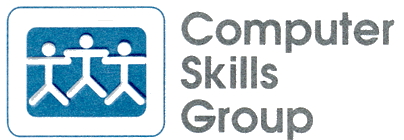

What is the Taskbar?
The Taskbar is usually the bottom most line on your computer screen. This bulletin will assume the Taskbar is in that position for the following descriptions. One sure way to identify the Taskbar is to locate the Start Button. It's always on the Taskbar so, find it and you're there. What most people don't realize is that you have quite a bit of say about what else appears on the Taskbar. This bulletin will mention the major items and tell you how to configure them, whether it's to add something or fix something that's wrong.
First, the Taskbar may need to be "unlocked" before you proceed -
In newer versions of Windows (2000 and XP, but not 98), the position and content of the Taskbar can be locked. This feature is designed to prevent accidentally re-configuring the bar and then living with the mistake because you don't know what caused it, and can't figure out how to fix it. Don't think it can't happen. I would say I find this condition on at least 20% of customer machines and I'm always told that it happened 2 years ago, and they have no idea how it happened!
You lock/unlock the taskbar by pointing to a blank space on the bar and RIGHT-clicking. A menu opens. If the menu contains an item for "Lock the Taskbar", checking it will lock it and UNchecking it will unlock it. To experiment with any of the changes described below, the Taskbar must be UNlocked. Remember to lock it when you are finished experimenting with configurations.
There is another way to tell if the task bar is locked in Win2000 or XP -
If the taskbar is UNlocked, the Start Button will have a double vertical row of dots, just to the right of the Start Button. If there are no dots, the screen is locked and must be unlocked to make changes to it.
Where does the Taskbar display on your screen?
The standard position for the Taskbar is along the bottom edge of the screen. However, it can also be placed on the top or either side. With it UNlocked, click on any blank portion of the bar, hold the button down, drag the bar to any other edge of your screen, and release the button. Looks weird, huh! I think you will likely decide that the bottom of the screen is the most appropriate place, but not everyone agrees. I have customers who prefer the top.
What Automatically Appears On The Taskbar?
Whenever you open an application, an item identifying it appears on the Taskbar. Open a second application and a second item appears. Close an application and its Taskbar identifier disappears. If you have the feature known as "Group similar Taskbar buttons" turned off, the order of the icons will indicate the order in which applications were opened, reading from left to right.
What else Automatically Appears?
The Taskbar also contains the System Tray, found on the far right side of the bar. In it, you find the system time displayed, along with an icon for programs started automatically during the boot cycle. Some of the programs are idle, but some are not. Please note however, not all programs which are running on your computer are represented in the System Tray.
What else displays is up to you -
Beyond the above, any other items which appear on the Taskbar can be configured by you. Again, with the Taskbar UNlocked, RIGHT-click on a blank portion of the Taskbar. Rest your cursor on Toolbars to see a menu of other items which can optionally be displayed on the Taskbar. The one usually of most interest is "Quick Launch", but the other choices will have some appeal to specific readers. You can check or UNcheck as many as you like.
Quick Launch -
Quick Launch is an area normally positioned to the immediate right of the Start button. It contains the icons and links to various applications, files, or folders which are of interest to you. These links will either open an application, open a folder, access a web site, or whatever other function you can perform by creating a Shortcut. Items may be deleted from, renamed, cut or copied by RIGHT-clicking on the item and selecting from the menu. Items can be added using standard cut-and-paste. I find Quick Launch to be useful and convenient, so try it for a while to see how you like having it. If you don't like it, just turn off its display, with no harm done. You do NOT have to empty the Quick Launch area before disabling its display.
Fixing Where A Toolbar Is Positioned On The Taskbar -
I frequently see additional Toolbars displayed on customer's Taskbar's, often displacing the Quicklaunch bar from its default position. Turning off the display of the unwanted toolbar may be all the fix you need. However, understand that the order of appearance of these toolbars can be altered by resting your cursor on the double-row of dots to the left of the toolbar (a double-headed arrow will appear), holding down the left mouse button, dragging the toolbar to where you want it to be, and releasing the button.
One last trick -
If you have not allowed a particular toolbar to be wide enough to hold all the icons assigned to it, a set of right-pointing double carets will appear. Clicking on them displays the remaining icons. You can eliminate the double carets by resting your cursor on the RIGHT side Double-carets, holding the left mouse button down, and dragging the toolbar box wider.
You probably can't do too much damage while trying these changes. Just do it and see what happens.